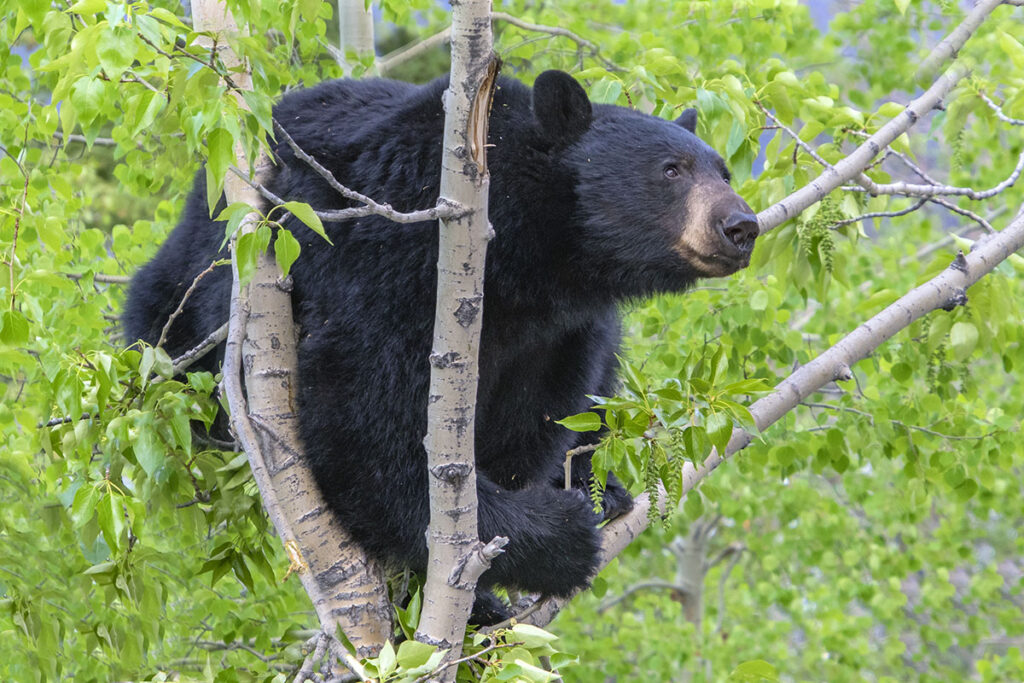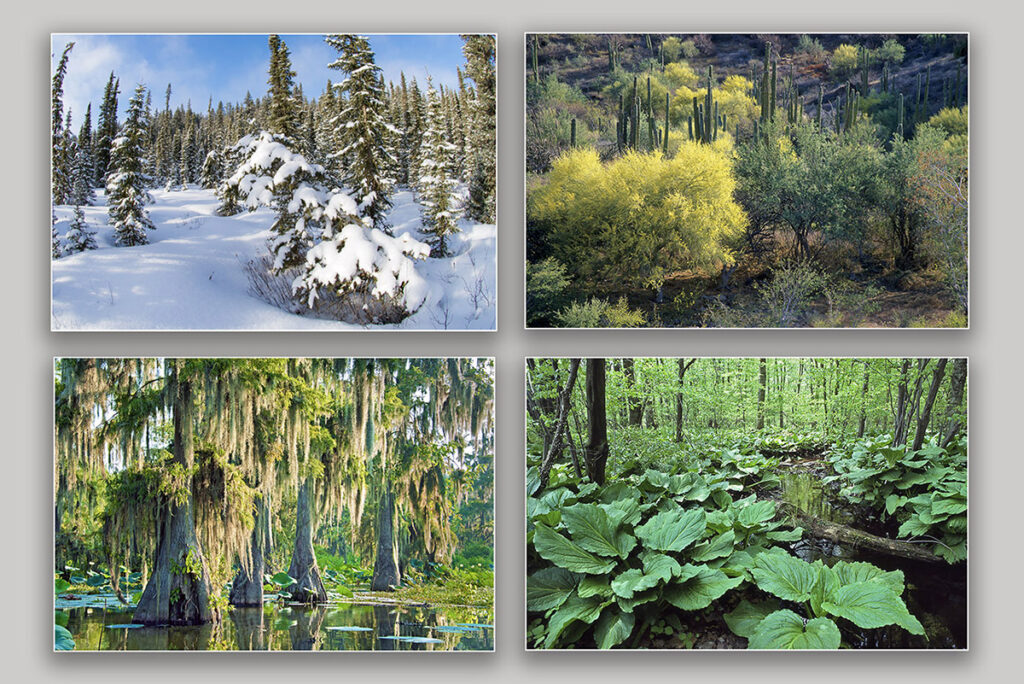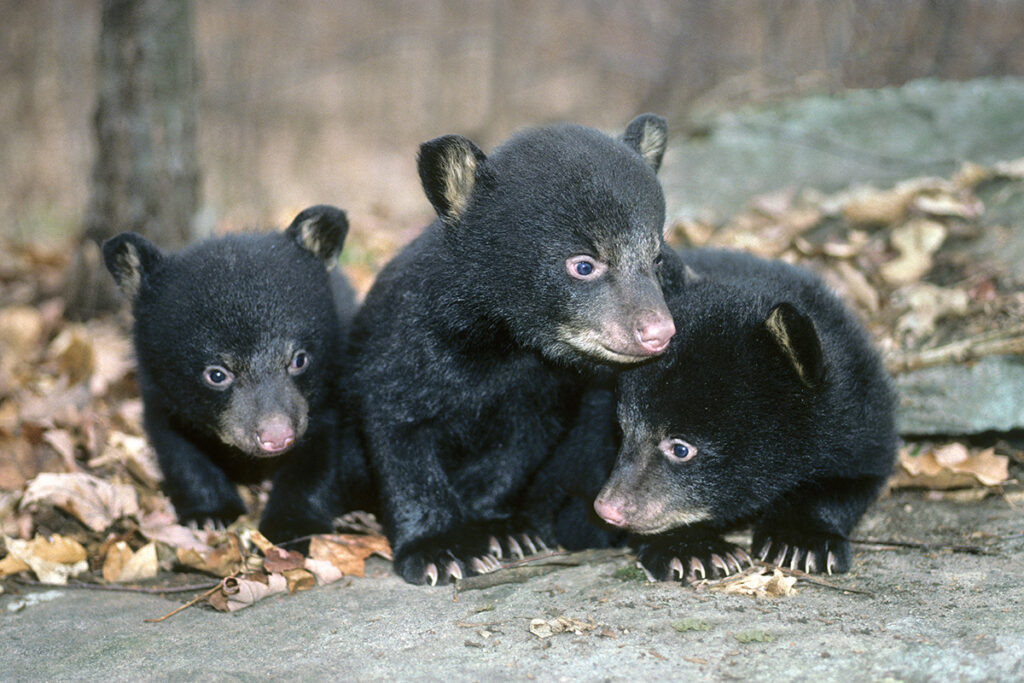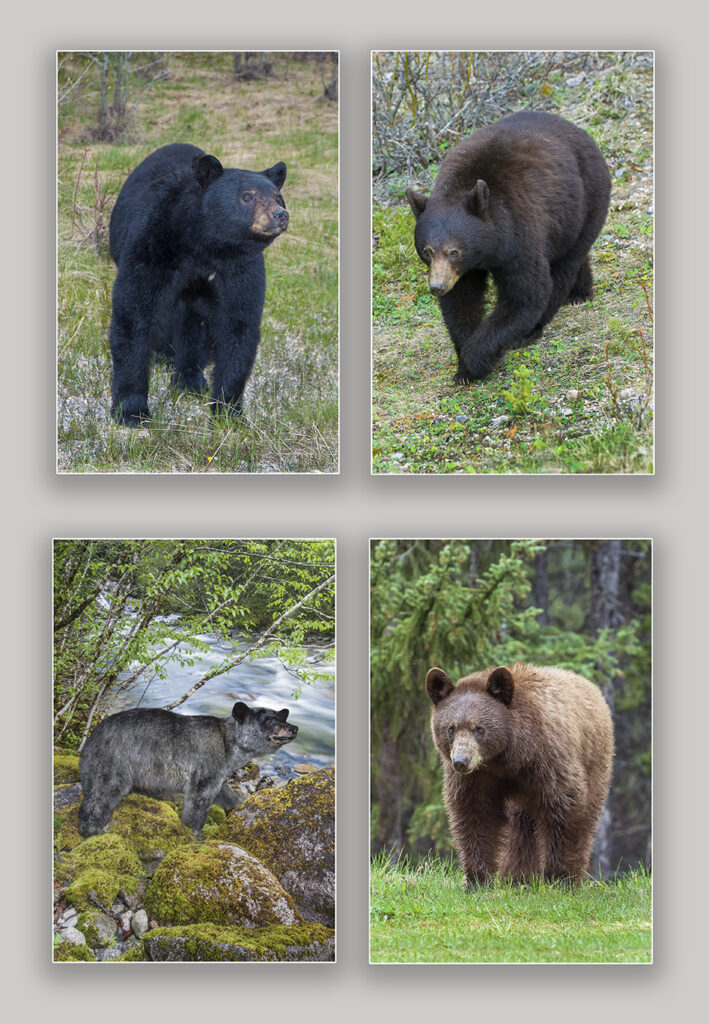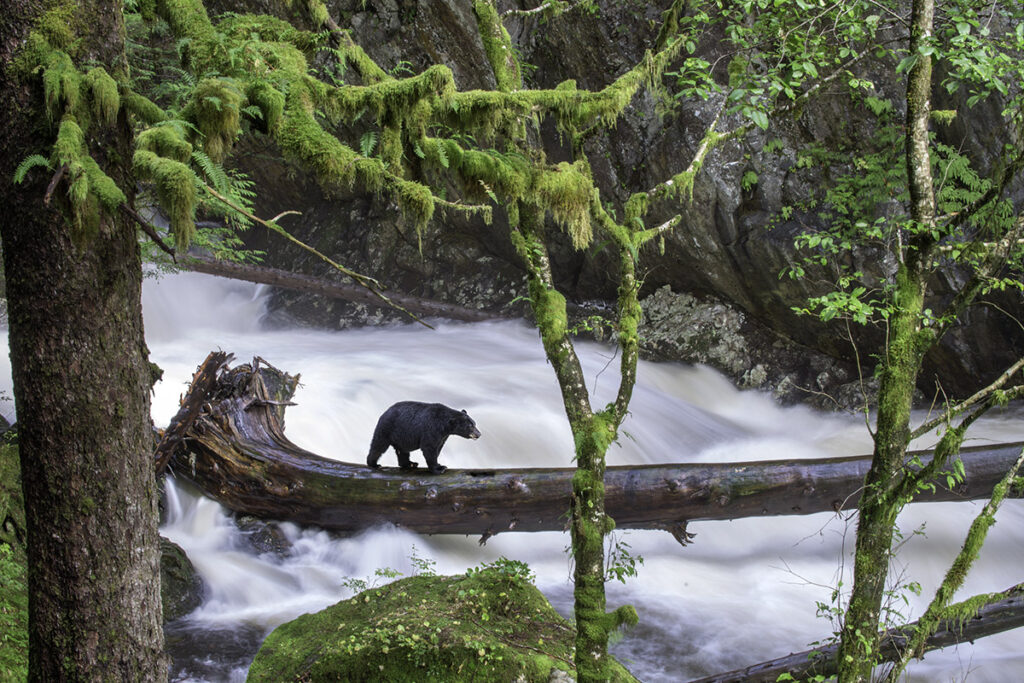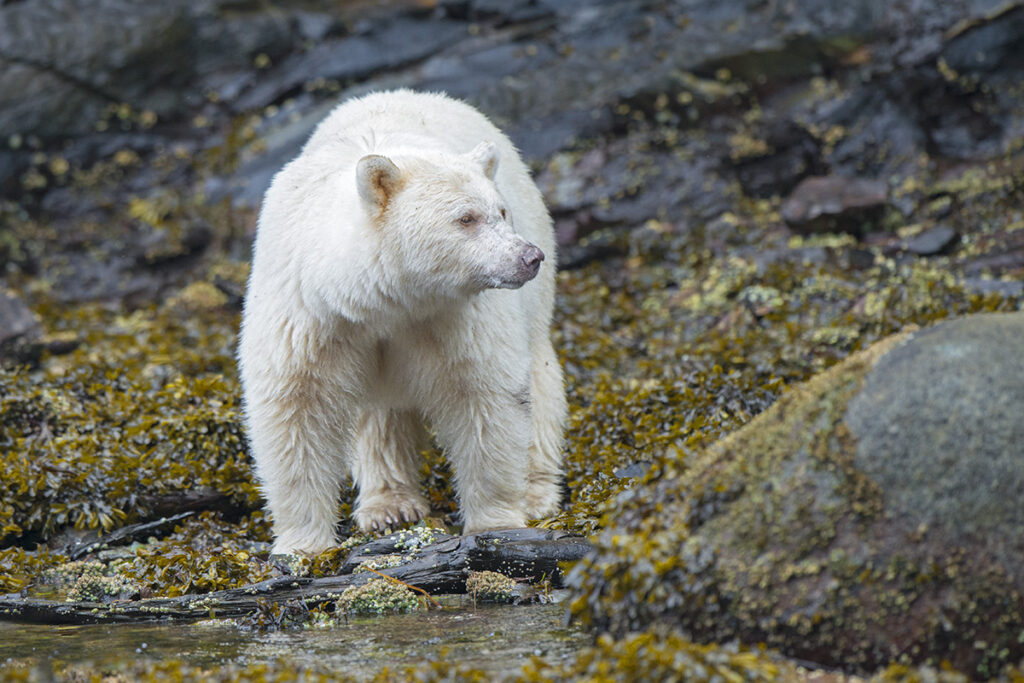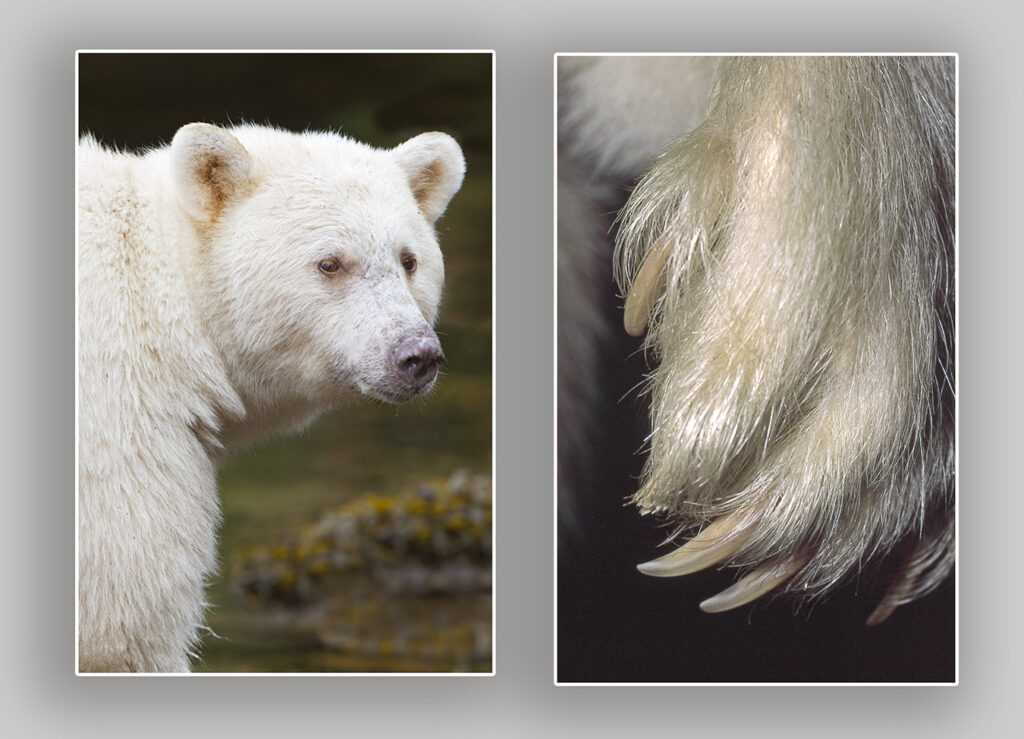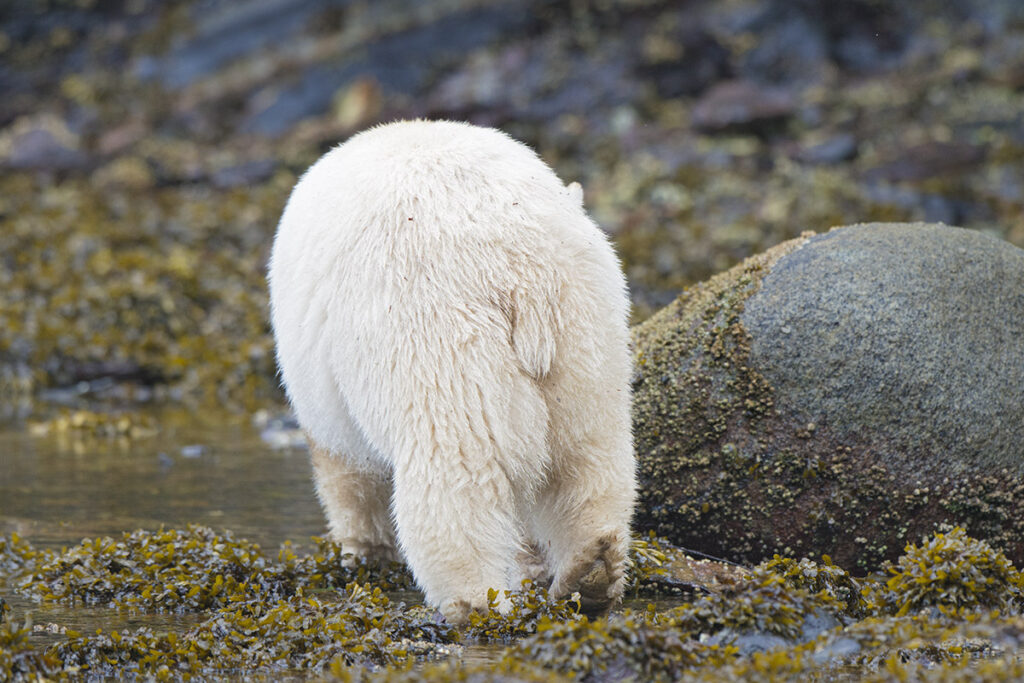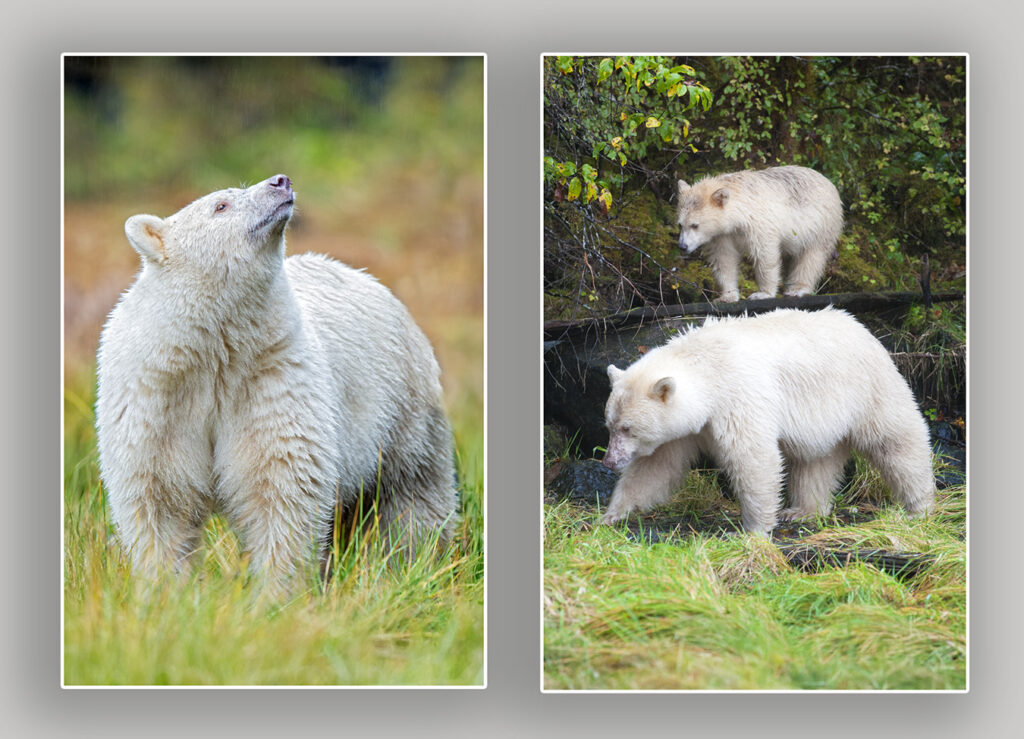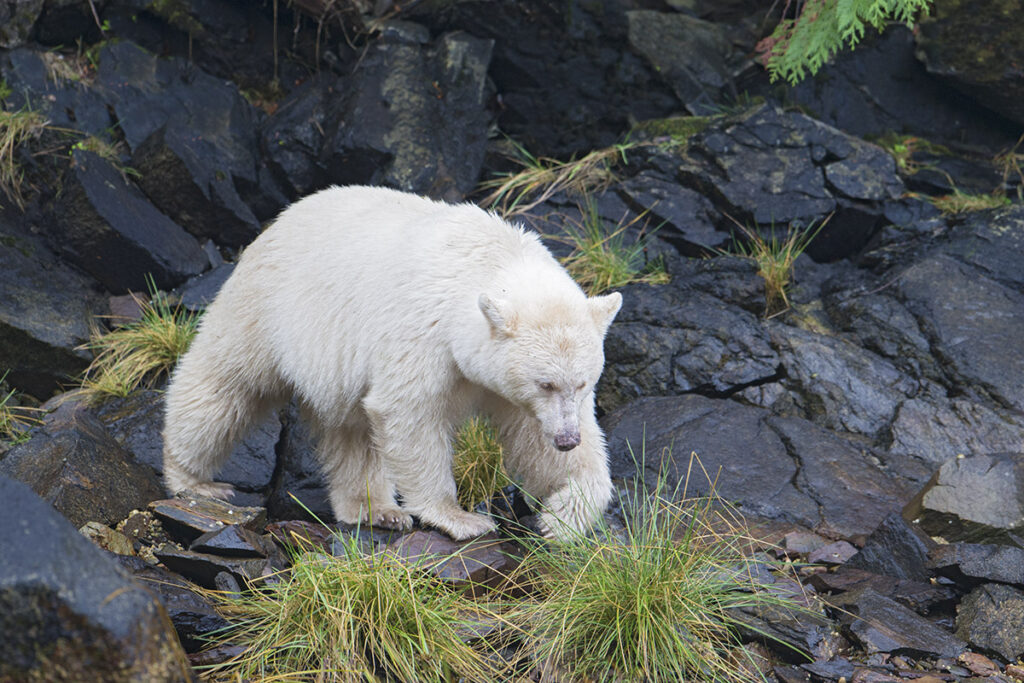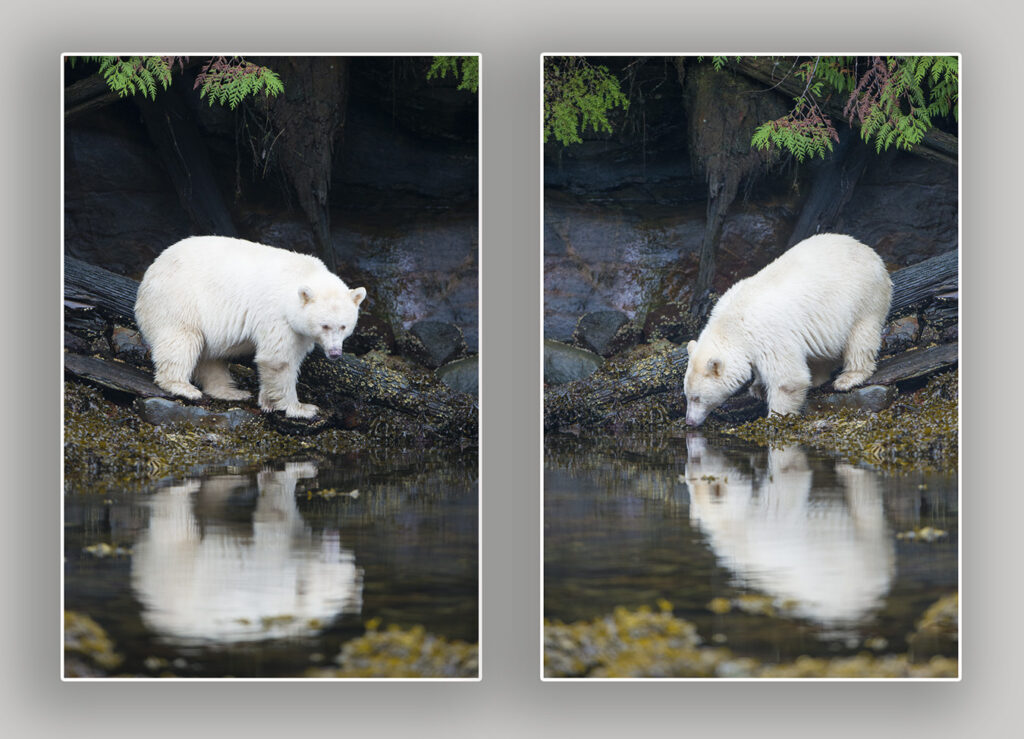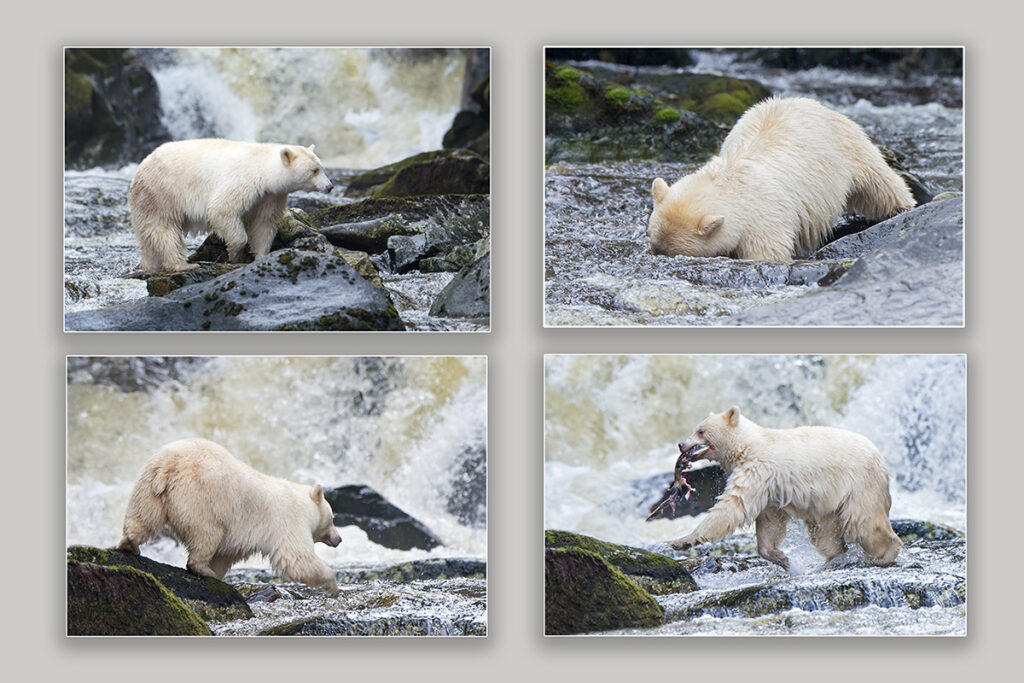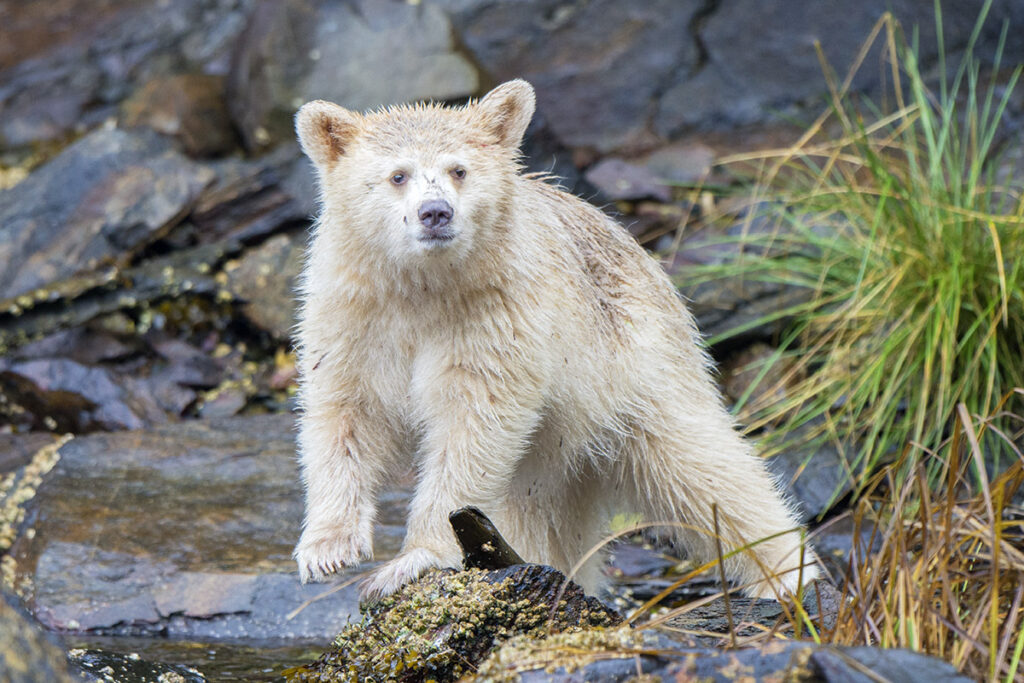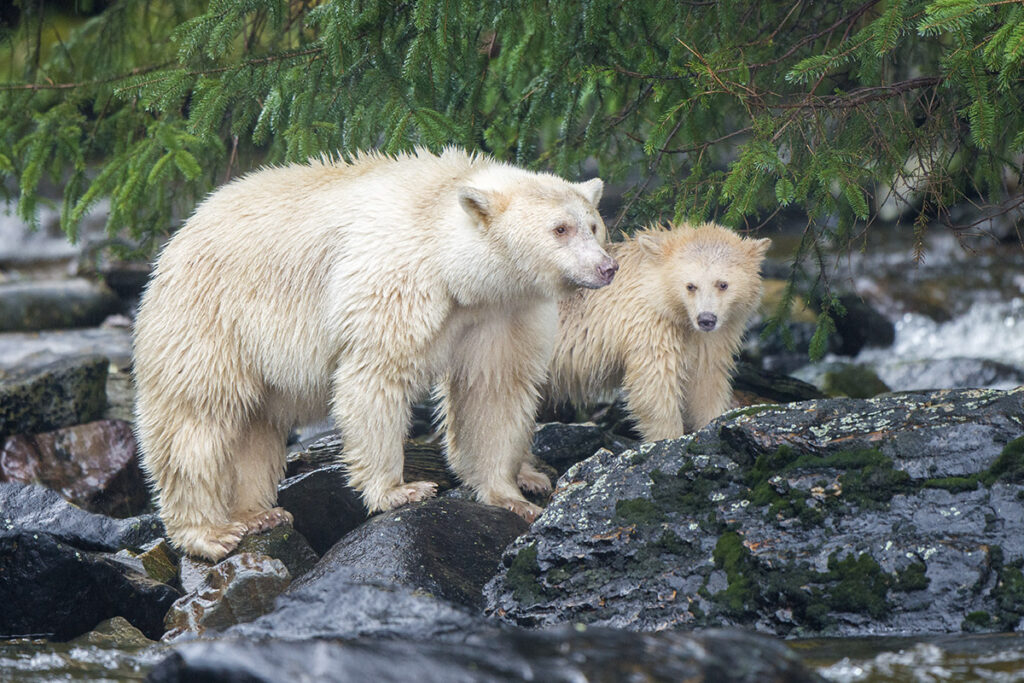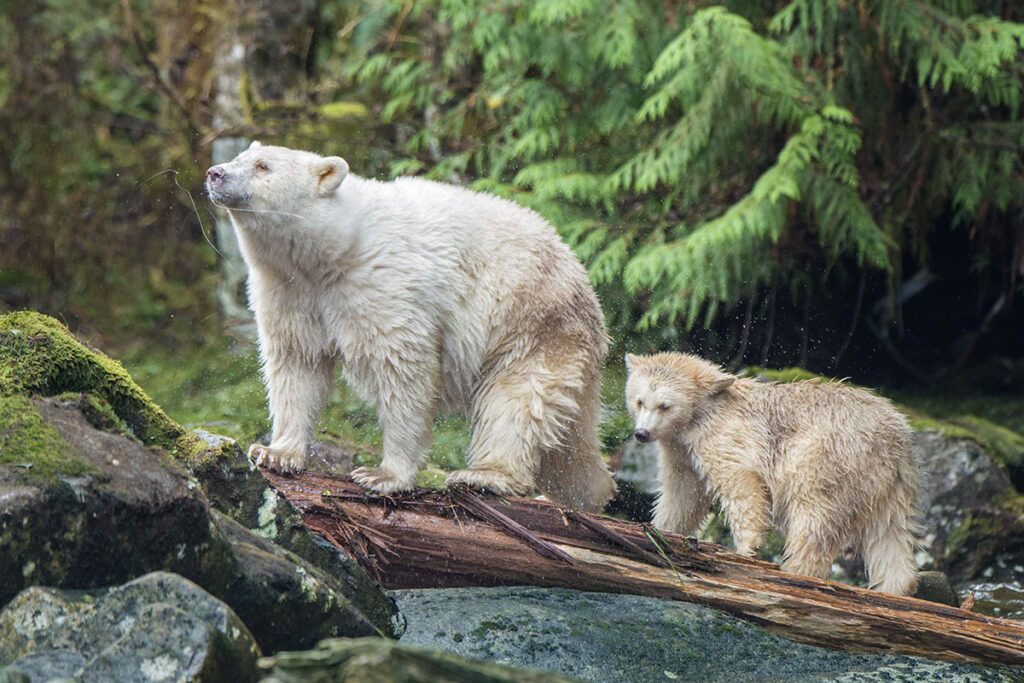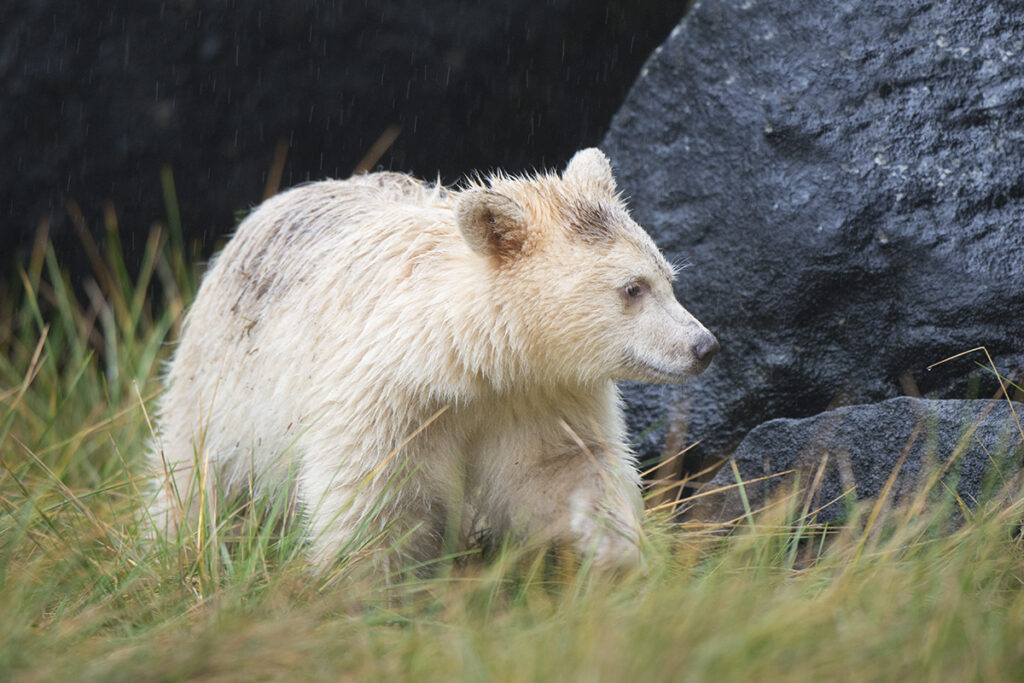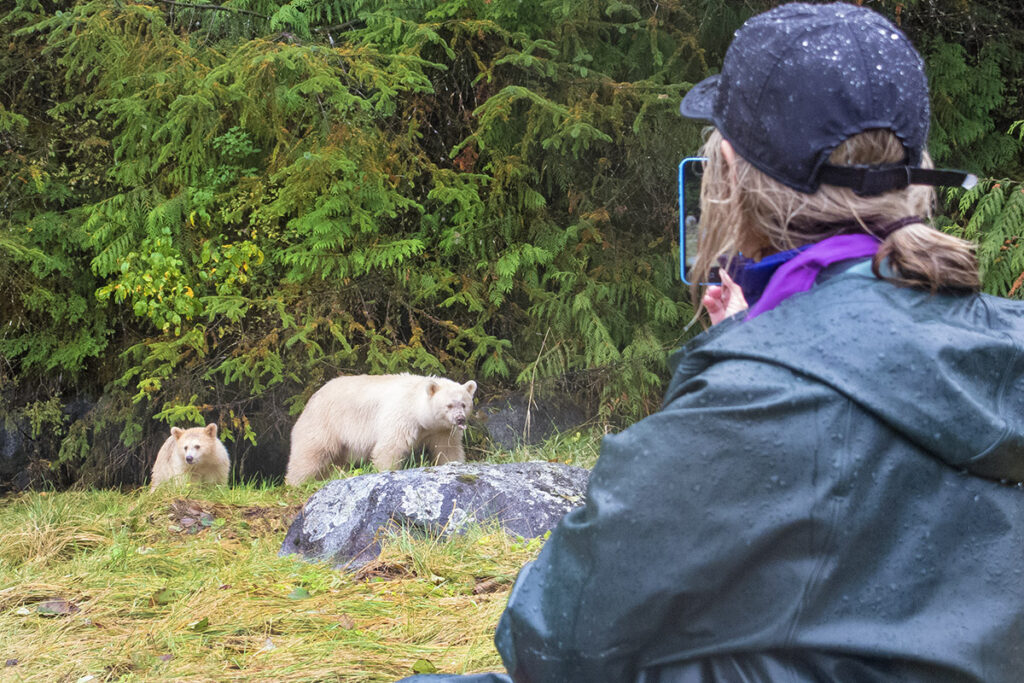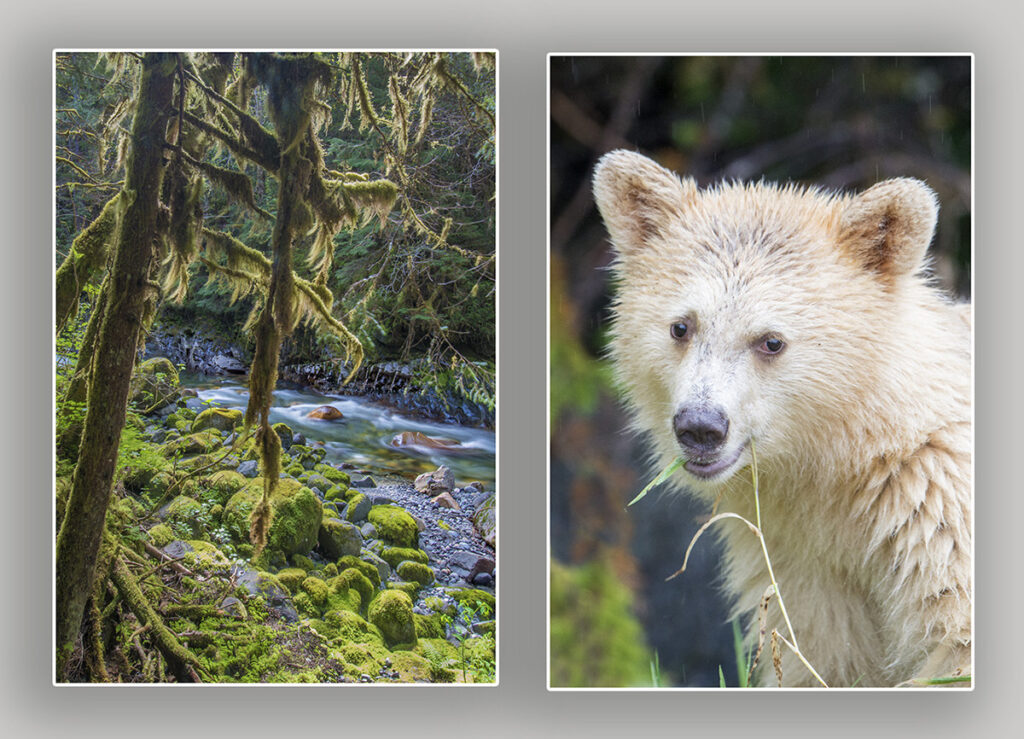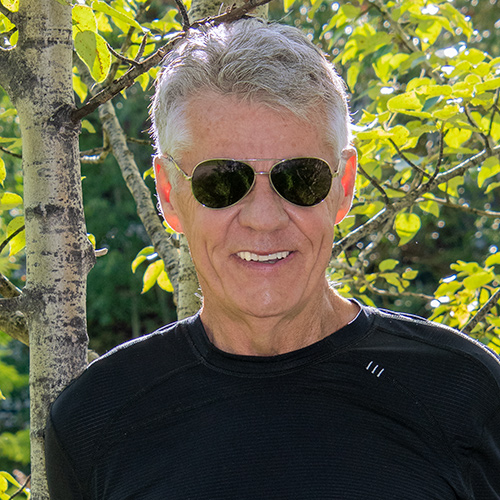Numbering between 850,000 and 950,000, the American black bear is the most abundant of the eight species of bears in the world. There are more black bears than there are of the seven other species combined.
The American black bear’s ability to coexist with humans is one big reason for its success. Another likely factor is its adaptability and its capacity to thrive in a wide range of habitats such as: (clockwise from the upper left) the immense boreal forest which stretches across North America from Alaska to Newfoundland, the desert scrub of Arizona, the broad-leafed deciduous forests that stretch from eastern Canada to Georgia, and the cypress swamps of Louisiana and Mississippi.
In Alaska, northern Canada, and the eastern third of the continent from Newfoundland to Florida, all of the black bears are black as is this trio of three-month-old cubs.
But black bears can be different colours in different parts of their range. The American black bear shows more colour variation than any other carnivore in the world. As you move west, the bears occur in a variety of shades of brown, including cinnamon, honey, light brown, and dark chocolate. The grayish-coloured bear pictured in the lower left is the so-called glacier bear found in a small area of northwestern British Columbia and southeastern Alaska. An individual’s colour persists throughout its life, although it often bleaches during the summer months.
Black-furred black bears are common in the temperate rainforests of coastal British Columbia, and they vastly outnumber perhaps the most beautifully coloured member of their species, the enigmatic white spirit bear.
The white spirit bear, also known as a Kermode bear (pronounced ker-MODE-ee), is not an albino black bear. It has dark brown eyes, and a blackish nose as do all black bears, but its claws are ivory-coloured instead of the usual black.
Bears are closely related to dogs, weasels and raccoons, many of whom have a large, conspicuous, fluffy tail. Bears, on the other hand, usually have a very short tail which is often hidden by their shaggy coats.
Over 95% of all spirit bears live in the heart of the vulnerable temperate rain forest on just four nearshore islands along the central coast of British Columbia north of the small fishing village of Bella Bella.
The white colouration in the spirit bear is the work of a recessive gene, and for a recessive gene to be expressed, the individual must have two copies, one inherited from each of its parents. Statistically, two black parents could produce a white cub but if both parents are white then all their cubs will also be white. However, if one parent is white and the other black, then the pair can have both a white cub and a black one in the same litter. Although there are nearly 2,000 black bears in this small coastal population, because of the way the recessive spirit bear gene expresses itself, the total number of white bears is precariously low and ranges from 200-328.
Like all black bears, the spirit bear is an omnivore that eats both plants and animals, although the bulk of its diet consists of berries, fruits, flowers, grasses, and sedges.
Every spirit bear has access to a segment of ocean coastline where it can feed on marine algae and sea grasses as well as crabs, clams, and fish that get trapped in tidepools.
Spawning salmon are an important part of every coastal bear’s autumn diet. This young female spirit bear was scavenging dead pink salmon that had become trapped below a tall waterfall.
In 2006, the white spirit bear became the official provincial mammal of British Columbia.
Food influences most aspects of reproduction in the life of a female bear. It is easy to understand why. Just consider the energy demands of bearing and rearing a litter of cubs. This process from conception to weaning, takes a minimum of two years in spirit bears as it does in all American black bears.
In a coastal population where the bears have a rich diet of spawning salmon and berries, a female bear may start to breed when she is just two and a half years old, have as many as three to four cubs at a time, and give birth to a new litter every two years.
Although this eight-month-old cub was still nursing it was old enough to feed on spawning salmon caught by its mother.
My wife Aubrey and I were sitting in the rain on the edge of a salmon stream when this curious cub kept coming closer and closer to us. Eventually, I had to clap and shout so that it didn’t get so close to us that its mother felt she had to defend it.
After more than four decades as a professional photographer I still feel so very lucky and thankful to live in a country with such a rich diversity of habitats and wildlife on which to train my camera.
About the Author – Dr. Wayne Lynch
For more than 40 years, Dr. Wayne Lynch has been writing about and photographing the wildlands of the world from the stark beauty of the Arctic and Antarctic to the lush rainforests of the tropics. Today, he is one of Canada’s best-known and most widely published nature writers and wildlife photographers. His photo credits include hundreds of magazine covers, thousands of calendar shots, and tens of thousands of images published in over 80 countries. He is also the author/photographer of more than 45 books for children as well as over 20 highly acclaimed natural history books for adults including Windswept: A Passionate View of the Prairie Grasslands; Penguins of the World; Bears: Monarchs of the Northern Wilderness; A is for Arctic: Natural Wonders of a Polar World; Wild Birds Across the Prairies; Planet Arctic: Life at the Top of the World; The Great Northern Kingdom: Life in the Boreal Forest; Owls of the United States and Canada: A Complete Guide to their Biology and Behavior; Penguins: The World’s Coolest Birds; Galapagos: A Traveler’s Introduction; A Celebration of Prairie Birds; and Bears of the North: A Year Inside Their Worlds. In 2022, he released Wildlife of the Rockies for Kids, and Loons: Treasured Symbols of the North. His books have won multiple awards and have been described as “a magical combination of words and images.”
Dr. Lynch has observed and photographed wildlife in over 70 countries and is a Fellow of the internationally recognized Explorers Club, headquartered in New York City. A Fellow is someone who has actively participated in exploration or has substantially enlarged the scope of human knowledge through scientific achievements and published reports, books, and articles. In 1997, Dr. Lynch was elected as a Fellow to the Arctic Institute of North America in recognition of his contributions to the knowledge of polar and subpolar regions. And since 1996 his biography has been included in Canada’s Who’s Who.



